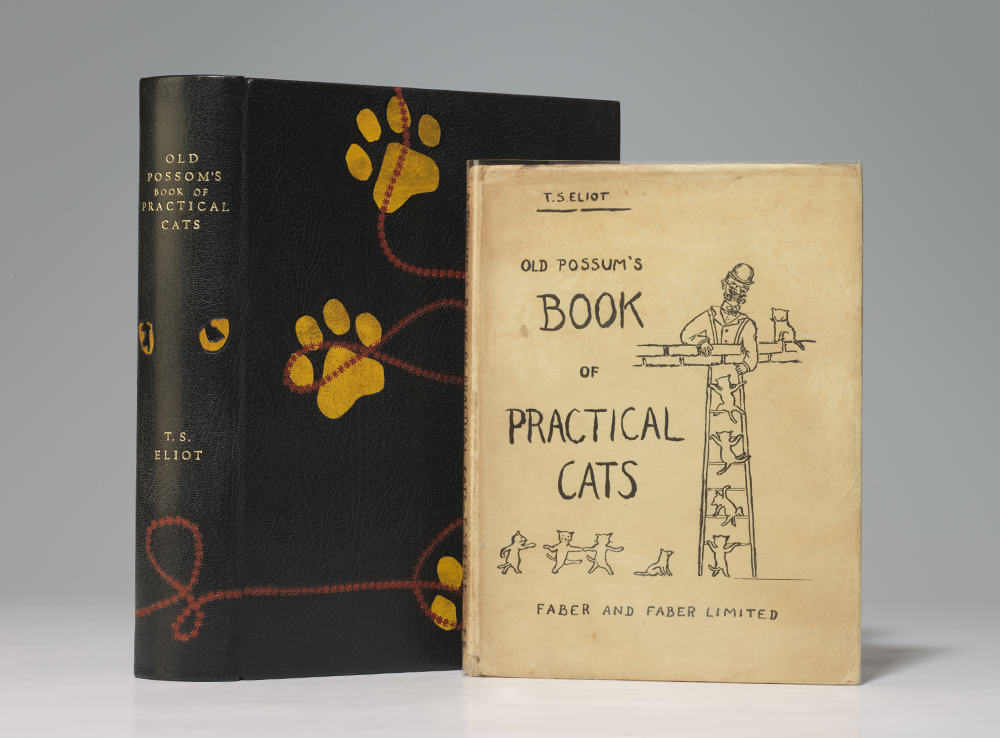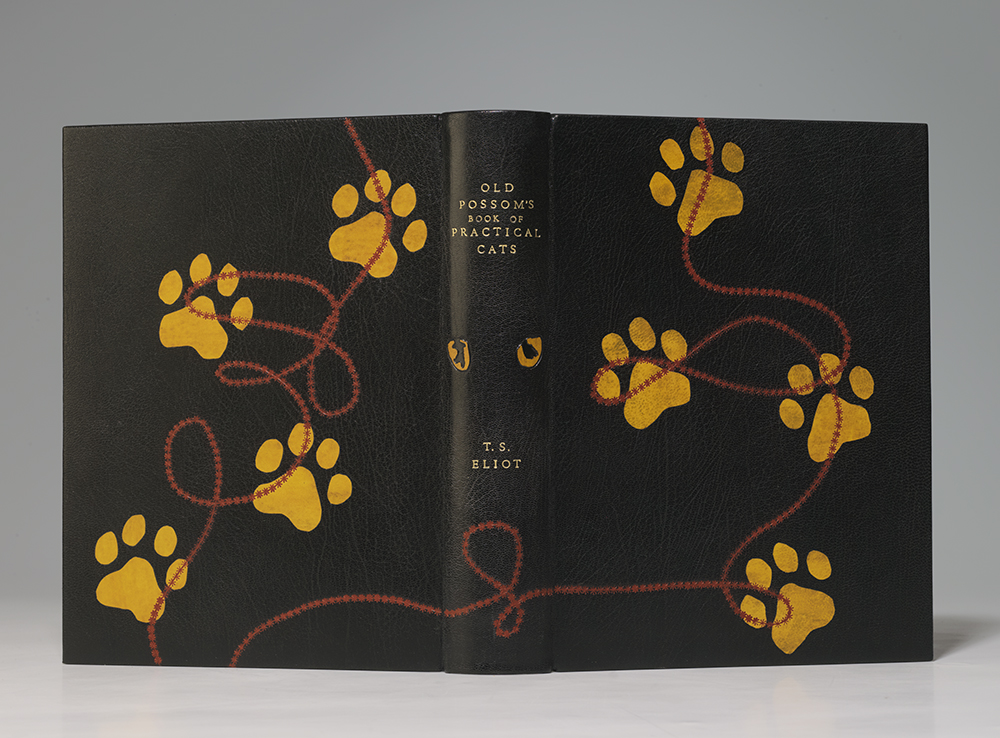Description
“TO MICHAEL TIPPETT WITH THE COMPLIMENTS OF O. POSSUM”: WONDERFUL PRESENTATION-ASSOCIATION FIRST EDITION OF T.S. ELIOT’S CLASSIC OLD POSSUM’S BOOK OF PRACTICAL CATS, BASIS FOR THE MUSICAL AND “ONE OF THE MOST FAMOUS 20TH-CENTURY BOOKS OF ALL… A MUST”
ELIOT, T.S. Old Possum’s Book of Practical Cats. London: Faber and Faber, (1939). Octavo, original yellow cloth, uncut, original dust jacket.
First edition of one of Eliot’s most popular books, in its original dust jacket designed and drawn by Eliot. This copy presented by Eliot in the year of publication to renowned English composer Michael Tippett, “To Michael Tippett with the compliments of O. Possum. 27.x.39.” Tippett was working on his most famous piece, A Child of Our Time, during or shortly before the time of this inscription, and though he had sought out Eliot to write the libretto, Eliot instead advised Tippett to complete it himself, telling him that adding poetry “would only get in the way of the music.”
Fellow poet Ezra Pound first gave the nickname “Old Possum” to Eliot. Eliot sometimes used it among his friends and occasionally signed letters to them with the initials “T.P.” (Tom Possum). “A classic from the day it was printed and today—partly because of the irrepressible musical, Cats—one of the most famous 20th-century books of all. This one is a must” (Joseph Connolly). The recipient of this copy, composer Michael Tippett, began working on one of his most important works around the time of this inscription, and did so following some advice from the man he considered a mentor, T.S. Eliot. Following the anti-Jewish pogrom in Germany known as Kristallnacht in November, 1938, Tippett wanted to write an oratorio based on the events that led to this horrible event. “Tippett at first approached his artistic mentor T.S. Eliot with a view to his writing the text. Eliot’s advice on reading the detailed draft he had requested, however, was that Tippett should go on to complete it himself, in that the words were already appropriate for musical setting: adding ‘poetry’ to them would only get in the way of the music. The Second World War finally broke out on 3 September 1939… and within days he began to compose the music of A Child of our Time. [Eliot inscribed this copy on October 27, 1939, perhaps while working on the libretto or shortly thereafter.] It was completed two years later in 1941, but was put aside with no immediate hope of a performance… it crystallized all his current political, moral, and psychological concerns within a universal framework. It was consciously a modern counterpart of Bach’s passions and Handel’s Messiah; Tippett discovered in the negro spiritual a living substitute for Bach’s Lutheran chorales. The collective emotion thus released gives the score a depth of compassion unique in 20th-century music. When eventually performed at the Adelphi Theatre, London, in 1944, A Child of our Time belatedly established Tippett at the forefront of the composers of his generation. It became his most frequently performed work internationally” (ODNB). Gallup A34a.
Book very good, with mild toning and mild wear to spine ends, and light dampstaining at corners affecting cloth but not text. Dust jacket very good with edge-wear and a small hole on front panel reinforced on verso with tape. A desirable inscribed association copy.




